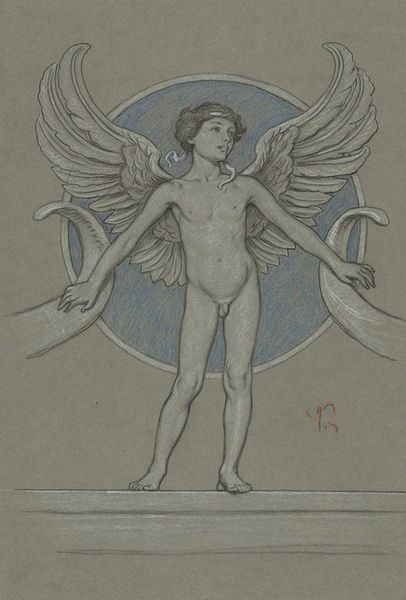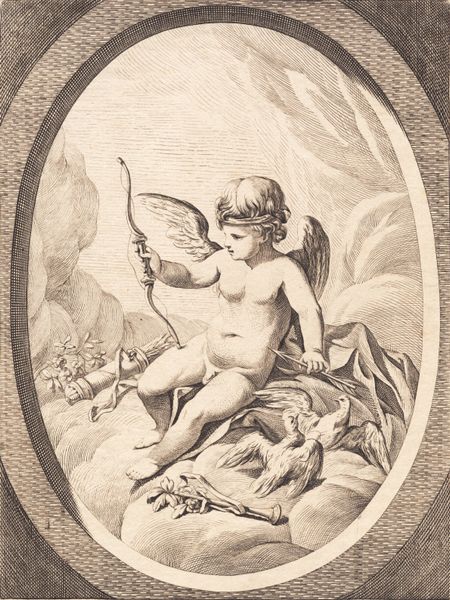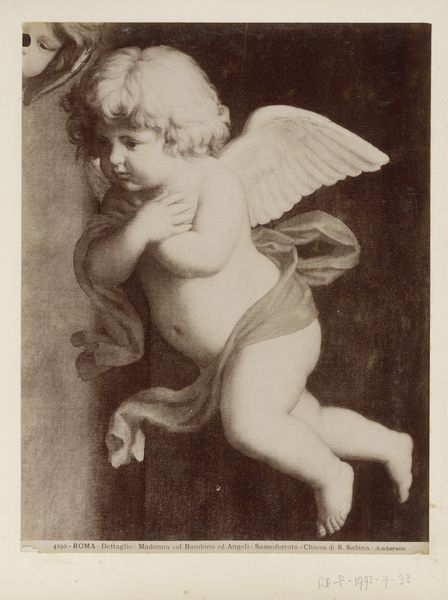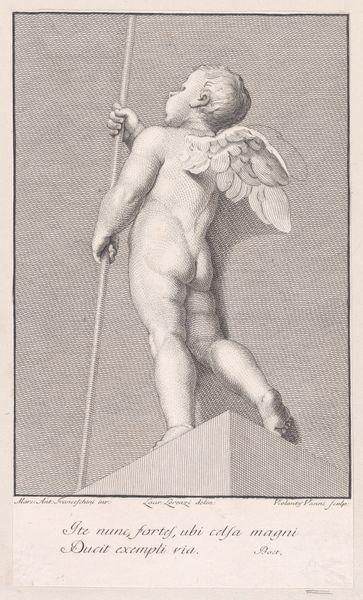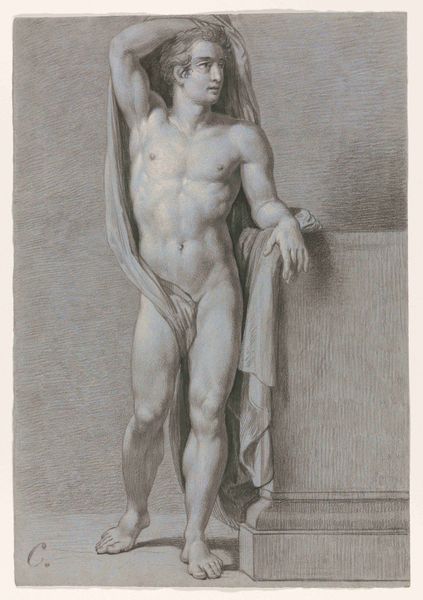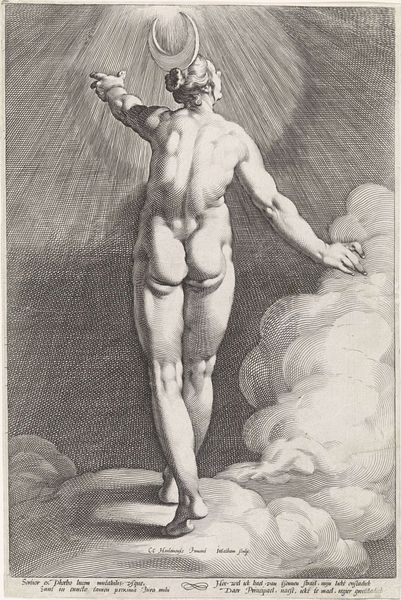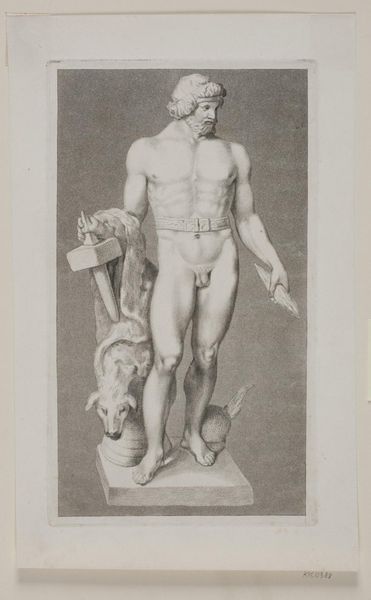
drawing, charcoal
#
drawing
#
neoclacissism
#
allegory
#
charcoal drawing
#
charcoal
#
charcoal
#
nude
Copyright: Public Domain: Artvee
Curator: This striking drawing is "Le Génie de la Force" by Pierre-Paul Prud'hon. Executed in charcoal, it showcases the artist’s talent for rendering soft, ethereal forms. Editor: It’s beautiful, undeniably so. The figure is quite arresting against that blue paper. There’s a real softness, a gentleness that feels quite different from the grand pronouncements of Neoclassicism that were so common at the time. Curator: Exactly. The softness points to Prud'hon's mastery of chiaroscuro, employing subtle gradations of light and shadow. In this context, light represents not merely illumination but revelation, unveiling the inherent potential within. The figure itself, winged but still an infant, perhaps symbolizes untapped strength. We could interpret his support on a gnarled branch and his clutch of flowers as representing opposing elements—resilience and nascent promise—united. What is revealed through them, though? Editor: He embodies an innocence used to give authority to power, but is he an allegory of state, empire or citizen? It speaks to a larger political function—art not just representing the powerful but embedding those with power to act with innocence and morality. This kind of allegorical representation carries real societal power, doesn't it? Prud'hon and his contemporaries grappled with how to represent ideals of governance through these allegorical, often infantile, forms. Curator: Precisely! There's this underlying assumption that power wielded with naivety and delicacy remains intrinsically just, linking it to notions of divinely sanctioned dominion and moral uprightness. The child as ruler suggests purity of intent. I think it taps into this persistent cultural fantasy of untainted leadership. Editor: Which is a powerful fiction. It reflects a time when art served less as documentation and more as a crafting and embedding of desired values into public consciousness. Curator: Yes, images like this become powerful vehicles for propagating not just artistic sensibilities, but also carefully chosen ideologies and world views. We need to recognize the artist's role as both creator and purveyor of cultural symbolism. Editor: Looking at it that way, you can really read how this drawing participates in its historical moment. Fascinating how those values can get so carefully embedded and transmitted! Curator: It’s been enriching to examine both the artistry and the latent cultural encoding within Prud'hon's work. Editor: Definitely. An exercise in understanding not just beauty, but its politics.
Comments
No comments
Be the first to comment and join the conversation on the ultimate creative platform.

